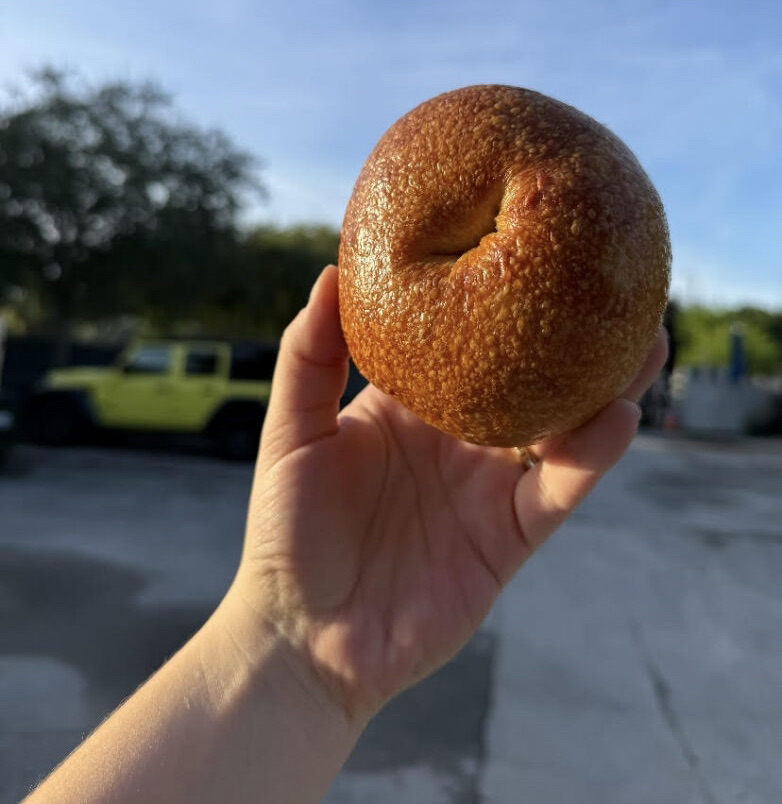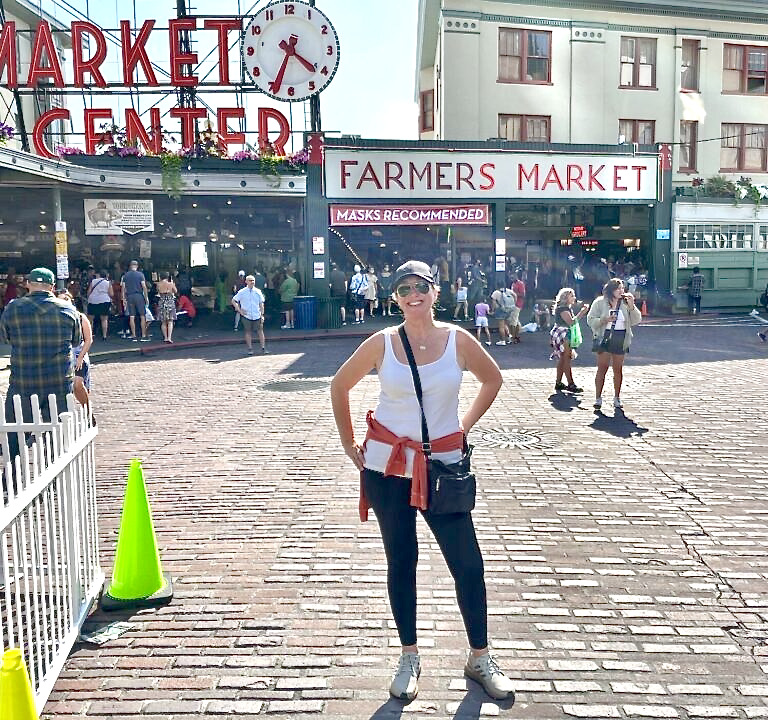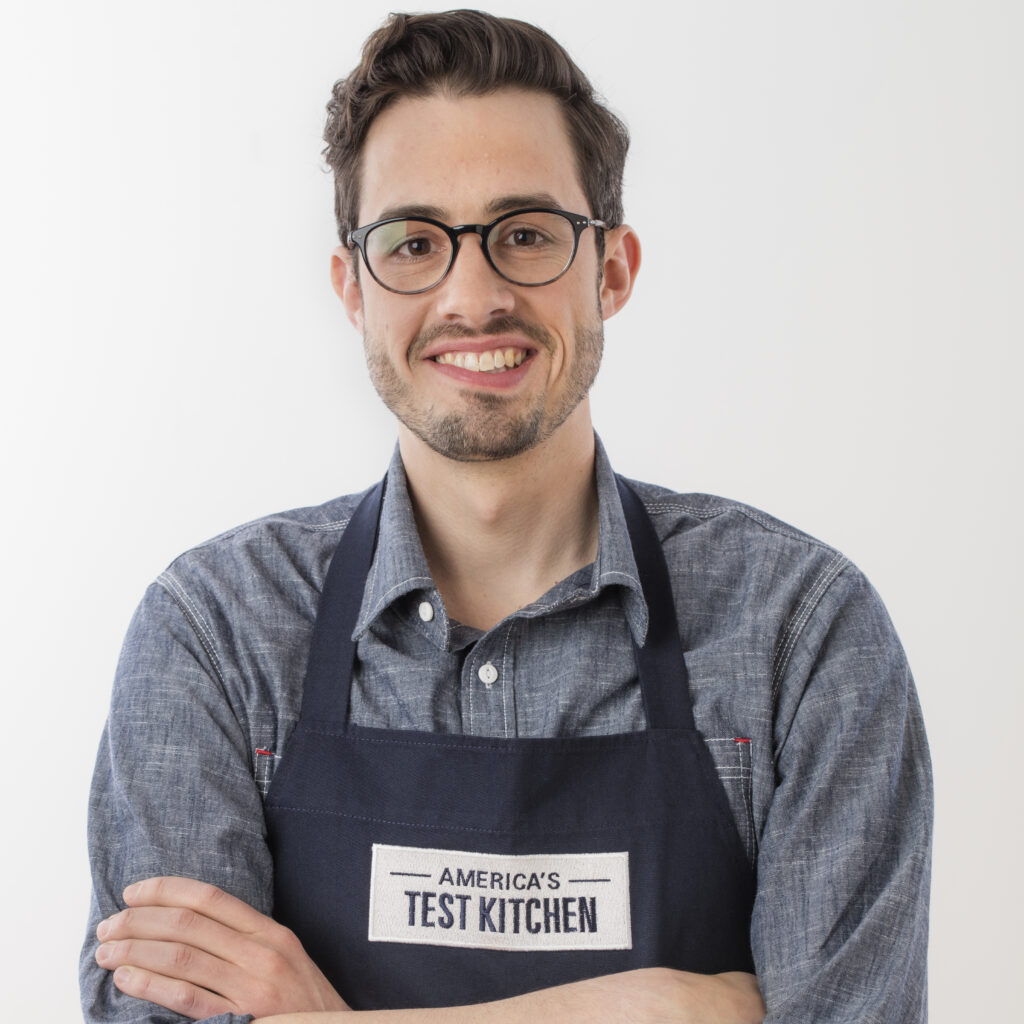
Americans are losing the ability to feed themselves. In just two generations, home cooking has plummeted from a daily ritual to an occasional inconvenience, replaced by a $200 billion delivery app economy that promises dinner in 30 minutes but delivers something far more insidious: a nation that has forgotten how to cook. As kitchen skills atrophy and isolation deepens, Dan Souza, Chief Content Officer of America’s Test Kitchen and the man behind the magazine Cook’s Illustrated, that taught millions of Americans how to cook, believes the simple act of making dinner might be the antidote to the loneliness, poor health, and disconnection that defines modern life. And he’s spent nearly 20 years building an empire to prove it.
“We see ourselves as teachers at the end of the day,” Souza says from ATK’s Boston headquarters. “We feel like if you’re cooking, you’re a much happier person. You’re eating healthier food, you’re gathering more people around, so you’re not lonely.”
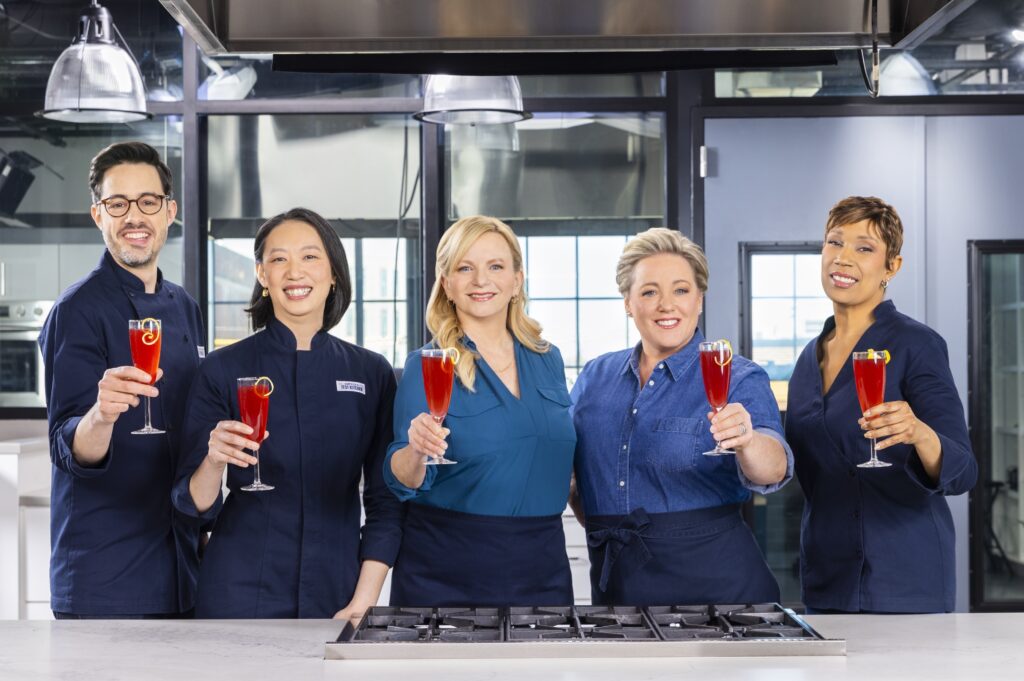
Souza, left, with the ATK team.
It’s a mission that has taken on new urgency as cooking skills have declined across generations and convenience has trumped home-cooked meals. But Souza, who oversees ATK’s vast content empire of 10 cookbooks annually, two magazines, two television shows, and a growing digital presence, believes the solution isn’t to shame people back into their kitchens; it’s to meet them where they are.
Souza’s path to leading one of America’s most trusted culinary institutions began, improbably, in a tiny Hungarian village of 1,000 people. Fresh out of college, he went to teach English but found himself gravitating toward the local restaurant’s kitchen instead. “I fell in love with it,” Souza recalls. “We were doing very authentic country cooking from Hungary.” That year abroad clarified everything. He abandoned a brief stint in advertising, enrolled at the Culinary Institute of America in Hyde Park, New York, and worked in Manhattan restaurants, all while searching for his “sweet spot.”
He found it in the very magazine his mother had subscribed to during his youth–Cook’s Illustrated. “My mom got it when I was a kid and she would cook the recipes. That was my early connection to food,” he says. After shadowing a cook for a few days, he thought, “This is the job, this is such a dream.”
Nearly 20 years later, after working his way up from test cook to senior editor to editor-in-chief of Cook’s Illustrated, Souza now sits atop the entire ATK content operation. A year ago, when his longtime mentor stepped aside, Souza took the reins as chief content officer—a role that puts him in charge of every cookbook, magazine, TV show, YouTube channel, and social media account the organization produces.
In a digital landscape saturated with food influencers and viral recipes that may or may not actually work, America’s Test Kitchen has maintained its credibility through an almost obsessive process that has remained unchanged for 30 years. “We give really talented cooks the time, the space and the resources to test recipes over and over again,” Souza explains. The test kitchen houses 84 ovens and countless specialized stations, allowing cooks to experiment at a scale impossible in home kitchens. “We really believe that our process delivers recipes that will work the first time, every time you make them.”
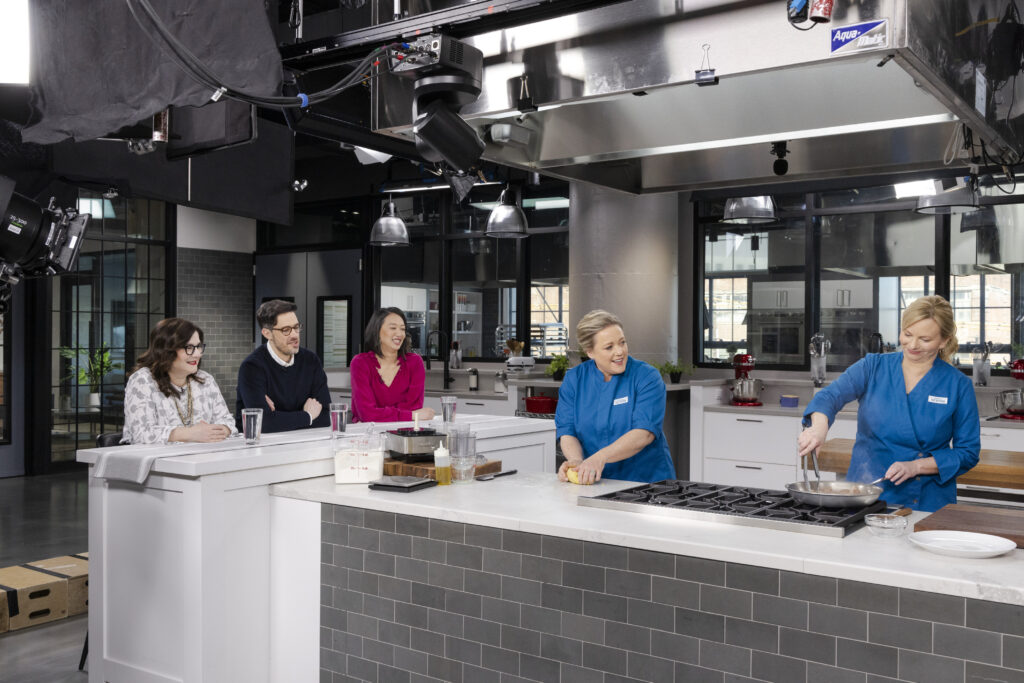
Fresh pasta coming to life in the ATK kitchen.
It’s a labor-intensive approach that stands in stark contrast to the rapid-fire recipe content proliferating across social media, but Souza argues that the investment pays off in saved time and reduced stress for home cooks. “There are thousands of recipes out there that you don’t have to pay for, but we put so much effort into ours, so we really stand by them. We think they are totally worth paying for.”
The organization also refuses all advertising, meaning subscribers pay purely for content, a rarity in food media. “If you’re buying a subscription from us, whether it’s a digital subscription to our app, one of the magazines, or cookbooks, you are paying for content,” Souza says. “What we find is people try our recipes, they have success the first time, every time they make our recipe, and that saves them time. It takes the stress away.”
Far from being a Luddite resistant to digital trends, Souza has embraced the changing media landscape. Under his leadership, Cook’s Illustrated, a quiet, ad-free magazine known for its sparse, illustration-heavy pages, has exploded across social platforms. “I’m a huge social evangelist,” he says. “I know there are some downsides to social media, but I actually think about how much I learn from reels on Instagram and TikToks. Very, very rapidly you can learn a ton if you go to good sources that are telling you good information.”
He points out that the same recipe can be delivered as a 1,500-word magazine article, a 30-minute TV episode, an 8-minute YouTube video, or a 60-second Instagram reel—and each format serves a purpose. “If you follow us, especially the Cook’s Illustrated Instagram account, we are always showing you really cool tips and techniques that you can literally try in your cooking that night.”
When Souza became editor-in-chief of Cook’s Illustrated eight years ago, he saw an opportunity. “The magazine was excellent, but where we were lacking was in the social media space. We had a very small following on Instagram and I was set to change that. We had a really small presence on YouTube and I set out to change that.” The strategy worked. “We are finding so many people coming into the brand that may not be magazine subscribers nowadays and that is totally fine. We need to meet them where they are.”
The organization recently launched “Cook Mode” on its app, which breaks recipes into bite-sized video steps that users can swipe through like Instagram stories. “It’s like going from a printed map 20 years ago to GPS for directions,” Souza explains. “There are small videos that cover every single step of the recipe. If you’re not interested in reading a whole recipe, we’re going in this direction that is a very interesting value add.”
This multi-platform approach reflects ATK’s core belief that people absorb information differently, but the goal remains the same: “Being successful cooking something in the kitchen makes us all feel really, really good.”
After decades of testing, ATK continues to overturn conventional wisdom. Don’t salt your beans while cooking? “Total myth,” Souza says. “We actually brine our beans before we cook them, and we cook them with salt. That tenderizes the skins and gives you better beans.” That bitter green sprout in garlic cloves? “We found that the sprouts were really sweet. And it makes sense—if you think about any sprout in nature, it is full of sugars and it is really, really nice. The clove is the bitter thing.”
But perhaps the most significant trend Souza sees isn’t about technique. It’s about what’s on the plate. ATK’s new book, “Mostly Meatless” reflects a shift toward pushing meat “a little bit outside the center of the plate” and highlighting vegetables and grains. “It’s not vegetarian, it’s not vegan, it’s not restrictive in those traditional senses,” Souza clarifies. “It’s the way that I like to cook. I think it’s cooking for a really healthy and long life, and I see more and more people interested in this. The interest in vegetables and giving them their due on the plate, I think is very exciting.”
For someone who once learned to cook alongside Hungarian villagers without sharing a common language, Souza sees food as inherently connective. “I’ve had experiences traveling in other countries and met people who don’t speak the same language, but we are both into food and I’ve cooked with them. I learned how to make a dish with no shared language other than what is happening in front of you.” He’s quick to acknowledge that food won’t solve all the world’s problems, but maintains that “the table is a great place to bring people together and to start conversations.”
It’s a philosophy that extends to ATK’s latest initiative: the ATK Residency, which brings six talented chefs and creators from across the food landscape to collaborate for several years. “They have their own big followings, they are amazing creators,” Souza says. “They are going to be on our TV shows and across the board, so we have embraced the change, too. We have our core DNA, but we are always evolving to meet the needs of this generation and the next ones.”
Souza’s own cooking has been influenced by creators like Sarah Ahn, whose new book “Umma” (mom in Korean) tells the story of her mother’s South Korean noodle restaurant. “Her mom had a noodle restaurant in South Korea, and she is a true restaurant chef, and she cooks incredible food,” Souza says. The book, which hit number two on the New York Times bestseller list, is a mix of storytelling and her mother’s recipes. “I’ve been cooking from this a lot. I love the flavors.”
For Americans intimidated by cooking, Souza’s advice echoes his own journey from Hungarian village kitchens to the pinnacle of American food media: just start. “Frying an egg is an amazing task, an amazing effort. When you’re done with it, whether it’s amazing or not that great, you get to eat it. You’re playing with things, hands-on, and then you get to eat them. Eat your mistakes and successes as well.”
At the core, Souza remains most proud not of any specific ATK product, but of the work that happens every day in the test kitchen itself. “Every single day, and I have been in this industry for almost 20 years now, every single day I am learning something from what happens in that test kitchen. And that is a joy,” he says. “I am so proud of the people that we have and the work that we do.”
Despite the different platforms and formats, Souza believes the core human experience remains the same. People may absorb information differently, but successfully cooking something in the kitchen makes everyone feel good. It’s that connection between what happens in the test kitchen and someone having a better life that drives him. “I know it may sound big, but I do think that we have the potential to do that,” he says.
BONUS ROUND WITH DAN SOUZA
Favorite food city that is not New York, Boston, Chicago, or LA?
Miami has really incredible food. I love Cuban food and their seafood.
One regional food that deserves national fame?
Needhams are a homemade candy bar from Maine that feature a center made of cooked potato, shredded coconut, and sugar all enrobed in chocolate. I grew up eating and loving them. Potato in candy, who knew?
Go-to latenight snack after a long day of filming?
I make a lot of late night egg fried rice. It’s fast, fun to make, and infinitely customizable based on what’s in the fridge and what I’m craving.
Ever cried over a dish, not from spice, but because it hit your soul?
I’m not sure I’ve shed actual tears, but I’ve had many deeply emotional food experiences. Every time I’m invited into someone’s home for a meal while traveling hits me hard.
Your last meal on earth: what’s on the plate, and who’s cooking it?
A New England summer meal of lobster, corn, fresh garden vegetables, and blueberry pie. I’m cooking it alongside my mom, and we are sitting down as a family to eat.
Most emotionally nostalgic food from your childhood?
My mom’s shrimp and linguine
What’s the craziest thing you’ve ever eaten?
I wouldn’t use the term “crazy” because it’s traditional and authentic to the place, but in Hungary we would butcher a pig and make sausage and stuff out of it. One of the traditional things is to take the blood that comes from the pig and basically stir fry it up with onions and stuff like that. And it has sort of a livery texture and flavor to it that I don’t love. I ate it many times over there, but it was never my favorite.
Favorite food movie?
It’s hard to beat Tampopo!
NEXT ON THE DISH

